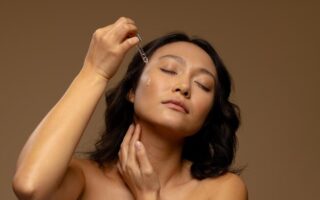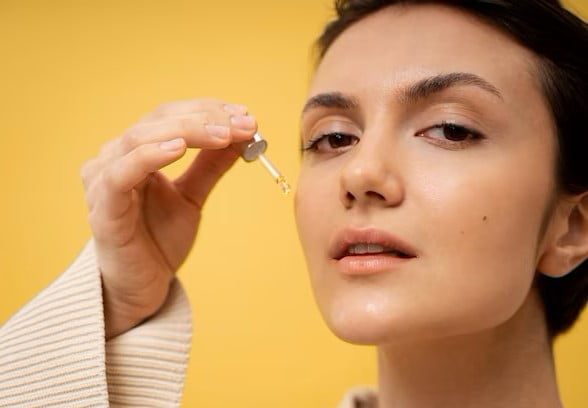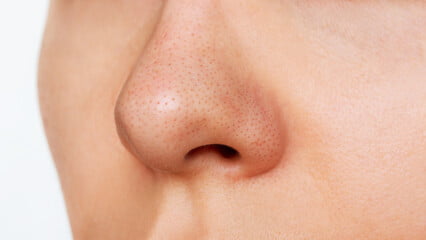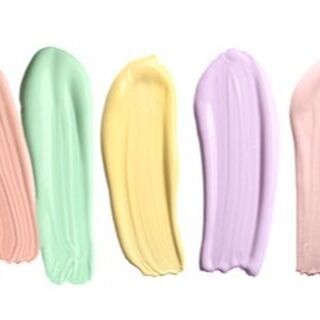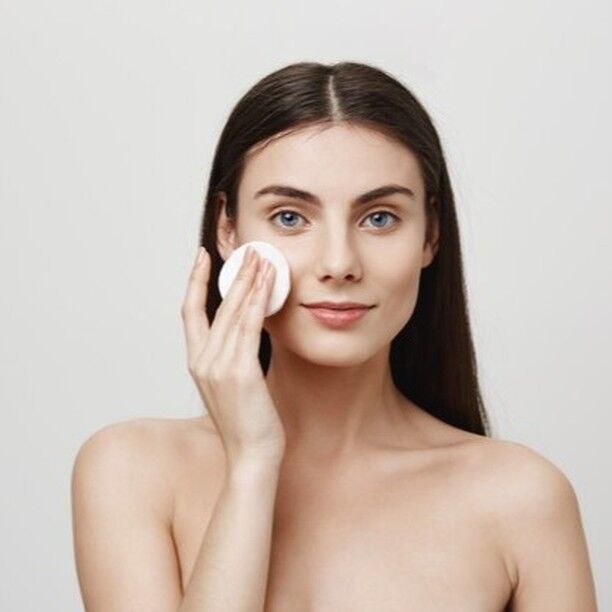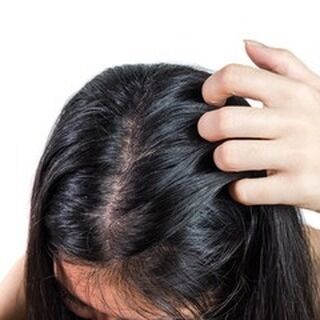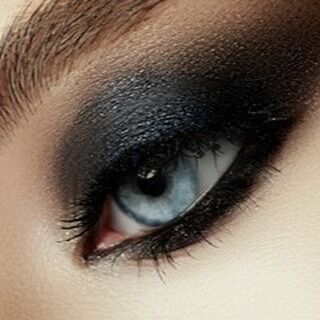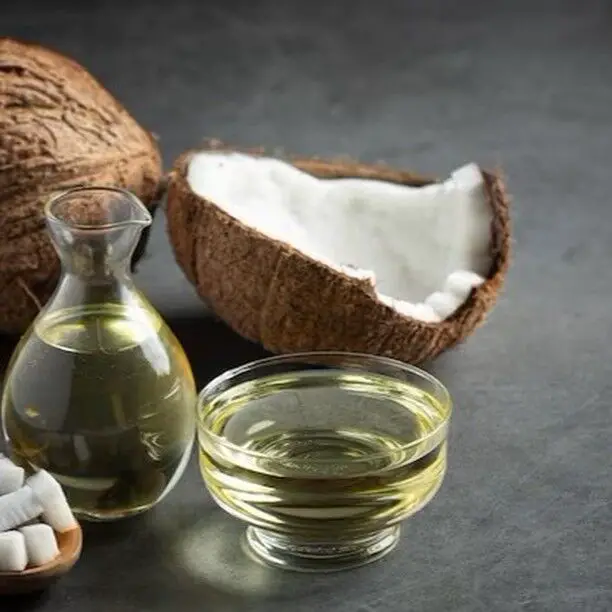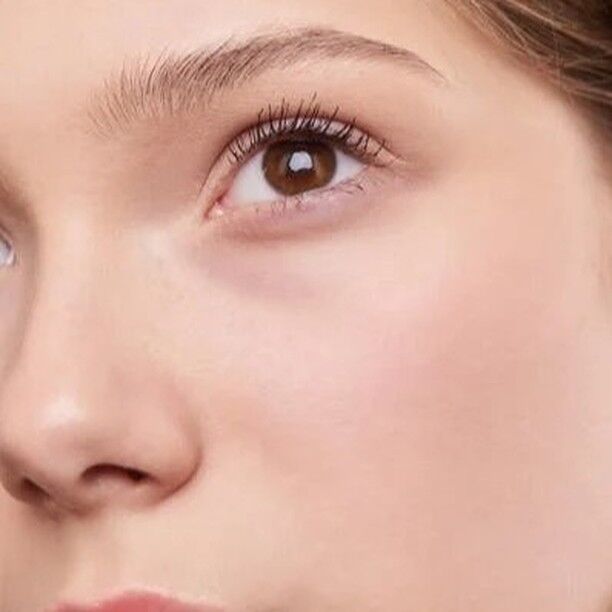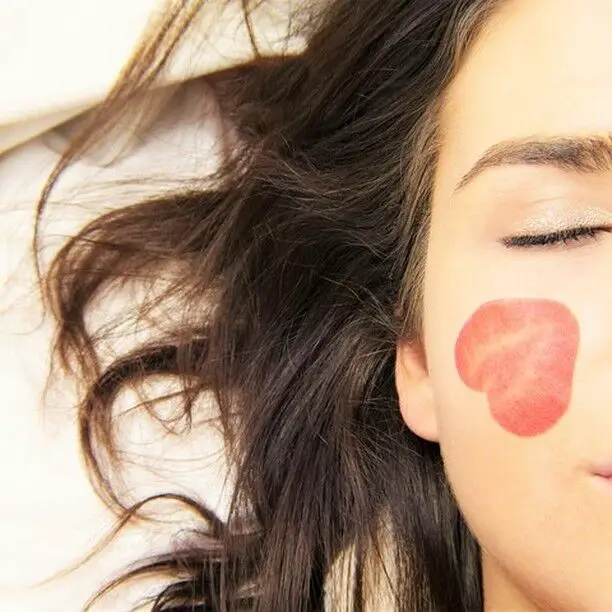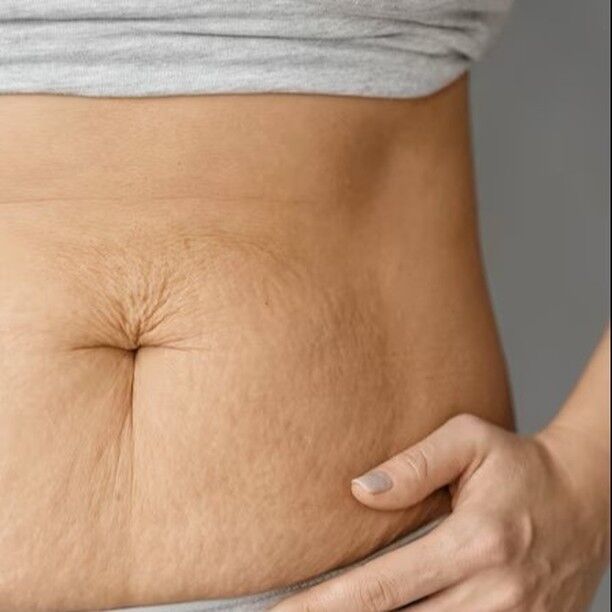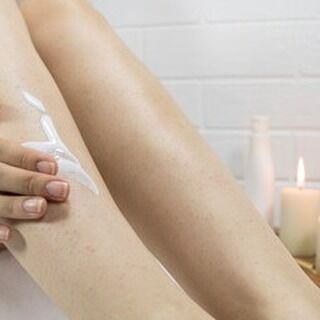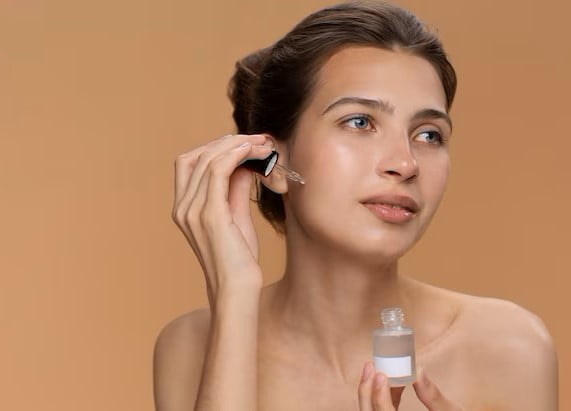
Designed by Freepik
Welcome to the world of skincare, where beauty enthusiasts are constantly seeking new and effective ways to achieve that radiant, glowing complexion we all dream of. Alpha hydroxy acids, commonly known as AHAs, are an ingredient that has gained popularity in the cosmetics industry. You’ve come to the right site if you’re curious about what AHAs are and how they can improve your skin.
Picture this: AHA is like a gentle but powerful fairy godmother for your skin. It’s a set of naturally occurring acids that work their magic by exfoliating those lifeless, dull skin cells, including glycolic acid and lactic acid. As a result, your skin’s natural regeneration process is accelerated, giving you a smoother, more youthful appearance.
Table of Contents
Let’s be clear about one thing before we get into the dos and don’ts of using AHAs:
skincare is not a one-size-fits-all endeavor. Because we each have a different skin type with peculiarities and sensitivities, we are all uniquely beautiful in our own way. And with great power comes great responsibility; the same goes for incorporating AHA into your routine. Use this wonder substance properly and according to your skin’s specific needs so that you get all the benefits without experiencing any negative side effects.
Throughout this article, we’ll be your trusty skincare advisors, sharing expert advice on the proper use of AHA for that enviable healthy and glowing skin. We’ll walk you through the ups and downs of AHA, the pros and cons, and we’ll spill the tea on how to use it effectively based on your skin type. So whether you have dry, oily, combination, or sensitive skin, we’ve got you covered!
Remember, the key to unlocking AHA’s potential lies in understanding its powers and using it wisely. Let’s start this skincare adventure together, and by the time we’re done, you’ll have all the information you need to confidently include AHA into your daily regimen and attain the glowing complexion of your dreams. Get ready to shine brighter than ever!
What exactly is AHA
AHA stands for “Alpha Hydroxy Acid,” but you can forget the scientific jargon; just call it the “friendly exfoliator!” Why friendly, you ask? Well, because it works gently to exfoliate your skin. Imagine AHA as a tiny team of superheroes, working tirelessly to remove dead skin cells from your face, revealing a fresh, glowing complexion underneath.
Now, the AHA team isn’t just one chemical; it’s a group of cool acids. The most common ones are glycolic acid (the overachiever), lactic acid (the hydrator), and fruit acids (the natural fruit lovers). They team up to give you the best skincare results!
The AHA Magic:
So, how does AHA work its magic? Well, these acids are smart cookies. They gently dissolve the “glue” that holds dead skin cells together on your face. Once the dead cells bid their farewell, your skin’s renewal process kicks into high gear, making way for fresher, younger-looking skin. Isn’t that awesome?
Now, let’s talk about the perks! AHA comes bearing gifts for your skin:
- Smooth Operator: AHA smoothes out uneven skin texture, leaving you with a baby-soft face that you won’t stop touching.
- Brightening Buddy: Say goodbye to dullness! AHA brightens up your skin, giving it a radiant, lit-from-within glow.
- Farewell Fine Lines: AHA may help reduce the appearance of fine lines and wrinkles, making you look like you’ve turned back time (well, almost!).
While AHA is indeed a superhero, even superheroes have their limits. You’ve got to treat AHA with kindness to make the most of its powers:
- Start Slow: Introduce AHA to your skincare squad slowly. Begin with a low concentration and gradually increase as your skin gets accustomed to it.
- Sunscreen Savior: AHA makes your skin more sensitive to the sun’s rays, so don’t forget your sunscreen! Shielding your skin from UV rays is crucial to avoid unwanted sunburns.
- Patch Test Power: Before you go all-in, perform a patch test. Dab a bit of AHA on a small area of your skin to see how it reacts. Safety first, folks!
The AHA party is inclusive! All skin types can join in on the fun, but like any party, there are some exceptions:
- Sensitive Skin: If your skin tends to get grumpy and irritated easily, take it slow with AHA or consult a skincare expert to find the right fit for you.
- Certain Skin Conditions: If you’re dealing with specific skin conditions, like eczema or rosacea, AHA might not be the best match. Better safe than sorry, right?
Parting Words:
There you have it, the friendly exfoliator, AHA, laid out in all its glory! With the right approach and a little patience, AHA can work wonders for your skin, leaving you with that enviable, healthy glow. So, go ahead, let AHA be your skincare sidekick on the journey to radiant skin!
Are you yearning for smooth, radiant, and youthful-looking skin? Look no further than Alpha Hydroxy Acids, lovingly known as AHA! These gentle yet powerful ingredients are the secret sauce behind many glowing complexions, and we’re here to spill the beans on why they’re so fabulous for your skin.
1. Exfoliation Extraordinaire:
Picture AHA as your personal skincare superhero, swooping in to save the day with its exfoliating prowess! These acids work diligently to break down dead skin cells and unclog pores, leaving your skin refreshed and renewed. Say goodbye to dullness and hello to a brighter, more luminous you!
2. Smooth Operator:
Do you dream of baby-soft skin that’s as smooth as silk? AHA has got your back! By encouraging the shedding of dead skin cells, it helps smoothen rough patches and softens those pesky fine lines, giving you a velvety-soft canvas to showcase your beauty.
3. Evens the Playing Field:
Uneven skin tone and dark spots putting a damper on your confidence? Fear not, for AHA is a champion at fading hyperpigmentation and age spots. It helps to lighten those trouble spots and even out your complexion, leaving you with a more balanced and harmonious skin tone.
4. Youthful Elixir:
Who says we can’t turn back the clock? AHA may not have magical powers, but it can certainly help reduce the appearance of fine lines and wrinkles. By promoting skin cell turnover, it encourages fresher, plumper skin to take center stage, making those signs of aging less noticeable.
5. Bye-bye Blemishes:
For all the acne warriors out there, AHA is a true friend in your battle against breakouts. Thanks to its ability to clear away dead skin cells and excess oil, it helps prevent clogged pores and reduces the chances of those pesky pimples making an appearance.
6. Sensitive Skin’s BFF:
Think potent ingredients are a no-go for sensitive skin? Think again! AHA, especially in lower concentrations, can be gentle enough for sensitive souls. It’s all about finding the right balance for your skin type and gradually easing it into your routine.
7. Boosts Skincare Product Effectiveness:
When your skin is properly exfoliated and prepped, it becomes a more welcoming canvas for the rest of your skincare products. By removing the barrier of dead skin cells, AHA allows your serums, moisturizers, and other goodies to penetrate more effectively, maximizing their benefits.
8.Non-invasive skin refresher:
If you’re looking to improve your skin without surgery, AHAs may be the answer. This non-invasive procedure will leave your skin looking younger and more vibrant without the recovery period associated with surgical treatment.
9. Ease of Use:
Using AHAs doesn’t require a doctorate in skin care. Incorporating AHAs into your regimen is really easy because there are so many products on the market with them. Whether you want a toner, serum, or cream, there’s an AHA choice for every preference.
Alpha Hydroxy Acids are the not-so-secret weapon to unlock your skin’s true potential. With their exfoliating magic, ability to fade dark spots, and fine line-banishing skills, they have earned their place as a beloved ingredient in the realm of skincare. Embrace the power of AHA, and watch your skin transform into the radiant masterpiece it was always meant to be!
While AHA (Alpha Hydroxy Acid) is a wonderful addition to your skincare routine, there are a few things you should be aware of to ensure a safe and pleasant experience. Here are the potential drawbacks you should keep in mind:
- Skin Sensitivity and Irritation: AHA is a powerful exfoliant that works by removing dead skin cells, but this can sometimes cause sensitivity, especially if you have delicate or reactive skin. You might experience redness, itching, or a slight stinging sensation. If you notice any of these reactions, it’s essential to adjust your AHA usage.
- Sun Sensitivity: AHA can make your skin more sensitive to the sun’s harmful UV rays. This means you’ll need to be extra diligent about wearing sunscreen daily, even on cloudy days. Sunscreen helps protect your skin from sun damage and prevents any potential dark spots or hyperpigmentation from forming.
- Over-Exfoliation Risks: While AHA is fantastic at sloughing away dead skin cells, too much exfoliation can lead to irritation and compromise your skin’s natural barrier. Avoid using AHA products alongside other strong exfoliants like scrubs or retinol, as this can increase the risk of over-exfoliation.
- Incompatibility with Certain Ingredients: AHA may not play well with other skincare ingredients, such as retinol or benzoyl peroxide. Combining these ingredients without proper care can lead to irritation and may cancel out the benefits of both products. It’s best to consult with a skincare expert if you plan to use multiple active ingredients.
- Not Suitable for All Skin Types: Though AHA can work wonders for many skin types, it might not be the best fit for everyone. If you have extremely sensitive skin, severe eczema, or certain skin conditions, using AHA could exacerbate the problem. It’s essential to know your skin’s unique needs and limitations.
- Initial Purging Period: When you first start using AHA, you might experience a temporary “purging” phase. This means your skin might break out a bit more as it clears out clogged pores and impurities. Don’t worry; it’s a natural part of the process and should improve after a few weeks.
- Risk During Pregnancy or Nursing: If you’re pregnant or nursing, it’s generally recommended to avoid strong active ingredients like AHA unless approved by your healthcare professional. It’s always best to prioritize the safety of you and your baby.
To make the most of AHA and avoid these cons, remember to patch test new products, start slow with low concentrations, and listen to your skin’s responses. If you ever have concerns or questions about using AHA, don’t hesitate to reach out to a dermatologist or skincare expert who can guide you on your journey to healthier, glowing skin!
Dos: How to Use AHA Effectively
- Patch Test First: Before diving into AHA, it’s essential to perform a patch test. Apply a small amount of the AHA product on a discreet area of your skin, like the inner wrist or behind the ear. Wait for 24 hours to check for any redness, irritation, or allergic reactions. If all looks good, you’re good to go!
- Start Slow and Steady: AHA can work wonders for your skin, but it’s not a race! Begin by using AHA products only once or twice a week. This allows your skin to get accustomed to the exfoliation process. Gradually increase the frequency if your skin tolerates it well.
- Listen to Your Skin: Your skin is unique, and it knows best. If you experience any irritation or excessive dryness, take a step back and reduce the frequency of AHA usage. Pay attention to your skin’s signals and adjust accordingly.
- Follow Instructions: Every AHA product comes with specific instructions from the manufacturer. Read and follow them diligently. Some AHAs may need to be rinsed off after a certain time, while others may be left on overnight. Stick to the guidelines for safe and effective usage.
- Use Sunscreen Religiously: AHA increases your skin’s sensitivity to the sun, making it more vulnerable to sunburn and damage. Always apply a broad-spectrum sunscreen with at least SPF 30 every morning, even on cloudy days. This helps protect your fresh and renewed skin from harmful UV rays.
- Timing Matters: For optimal results, use AHA products at night. This allows your skin to work its magic while you sleep and helps in reducing the risk of sun sensitivity during the day.
- Consider Your Skin Type: Different skin types have varying tolerances to AHA. If you have sensitive or dry skin, opt for milder AHAs like lactic acid. On the other hand, if you have oily or acne-prone skin, glycolic acid may be more beneficial.
- Patience Pays Off: Rome wasn’t built in a day, and neither is glowing skin. It may take several weeks before you notice significant changes. So, be patient and consistent with your AHA routine to see the best results.
- Hydration is Key: AHA exfoliates the top layer of your skin, which can sometimes lead to temporary dryness. Combat this by incorporating a hydrating moisturizer into your daily routine. Hydrated skin is happy skin!
- Use AHA in Moderation: While AHA can do wonders for your skin, using it in combination with other active ingredients like retinol or benzoyl peroxide may lead to over-exfoliation and irritation. Be cautious and avoid mixing too many potent products at once.
Remember, if you have any doubts or concerns, don’t hesitate to consult a dermatologist or skincare expert. They can provide personalized advice and guide you on the best way to incorporate AHA into your skincare routine for a healthy and radiant complexion!
Don’ts: Mistakes to Avoid
- Skipping the Patch Test: We know you’re excited to try out that new AHA product, but don’t forget to do a patch test first! Applying a small amount of the product on a discreet area of your skin will help you check for any potential allergic reactions or irritation. Safety first, always!
- Jumping in Too Fast: Slow and steady wins the race! Don’t rush into using AHA every day right from the start. Your skin needs time to adjust to this powerful exfoliant. Begin by using it just a couple of times a week, and then gradually increase the frequency as your skin gets comfortable with it.
- Neglecting Sunscreen: This is a BIG one! AHA can make your skin more sensitive to the sun, so never forget to apply sunscreen every morning, rain or shine. Shielding your skin from harmful UV rays will prevent sunburns and protect your skin’s newfound radiance.
- Mixing with the Wrong Ingredients: AHA is fantastic on its own, but it doesn’t always play well with certain other skincare ingredients. Avoid using AHA alongside retinol or benzoyl peroxide, as this combo can cause irritation and dryness. Also, be cautious with physical exfoliants while using AHA, as it may be too much for your skin to handle.
We all want to achieve that radiant, glowing skin, and AHA (Alpha Hydroxy Acid) can be a game-changer in our skincare routine. But did you know that AHA works differently depending on your skin type? Let’s explore how AHA can benefit various skin types and the best ways to use it for maximum effectiveness:
1. Oily Skin:
If you have oily or acne-prone skin, AHA can be your new best friend! It’s excellent at getting deep into those clogged pores and unclogging them. By doing so, it helps to reduce acne breakouts and keeps excess oil at bay. Glycolic acid, a type of AHA, is particularly effective for oily skin types. Start with a lower concentration of AHA and gradually increase it to avoid overwhelming your skin.
2. Dry Skin:
While AHA is a superstar for exfoliating, it’s essential to be gentle with dry skin. You don’t want to strip away too much moisture. Opt for AHAs with moisturizing properties, like lactic acid. This type of AHA can exfoliate and hydrate simultaneously, giving your skin a smoother and more supple feel. Remember to follow up with a good moisturizer to lock in that hydration after using AHA.
3. Combination Skin:
If you’re dealing with both oily and dry areas on your face, you’ve got combination skin. For this skin type, it’s all about targeted application. Use AHA on the areas that are more prone to oiliness and breakouts, like the T-zone (forehead, nose, and chin). For the drier parts, be a bit cautious with AHA, and focus on gentle exfoliation to avoid over-drying those areas.
4. Sensitive Skin:
Ah, sensitive skin, the one that needs extra care and consideration. AHA can be a bit tricky for sensitive skin types, as it may cause irritation if not used carefully. Consider opting for a milder AHA, like mandelic acid, and do a patch test before using it all over your face. Start by using it sparingly and see how your skin reacts. If it’s well-tolerated, you can gradually increase the frequency of use.
5. Normal Skin:
Lucky you! Normal skin types usually tolerate AHA quite well and can benefit from its exfoliating and brightening effects. You can choose from various AHAs, depending on your specific skin concerns. Just remember, even if your skin is relatively low-maintenance, always follow the recommended guidelines for AHA usage, and don’t forget the sunscreen!
6. Aging Skin:
AHA can be a real savior for aging skin. As we age, our skin’s natural exfoliation process slows down, leading to a dull complexion and fine lines. AHA helps speed up cell turnover, revealing fresher, younger-looking skin. Glycolic acid is particularly effective for addressing signs of aging, but remember to introduce it gradually to avoid any potential irritation.
Using AHA on Broken or Damaged Skin: As much as you might love AHA, it’s not meant to be applied to broken, irritated, or wounded skin. Let your skin heal first before reintroducing AHA into your routine to avoid further discomfort or potential infections.
- Over-Exfoliating: While AHA helps slough off dead skin cells, it’s crucial not to go overboard! Over-exfoliating can lead to redness, sensitivity, and even disrupt your skin barrier. Stick to the recommended usage and listen to your skin’s needs.
- Forcing AHA into Your Routine: AHA might not be the right fit for everyone. If you have super sensitive skin or certain skin conditions, like eczema or rosacea, it’s best to avoid AHA altogether. Don’t push your skin into using it if it’s causing irritation or discomfort.
- Using AHA During Pregnancy or Nursing: When you’re expecting or nursing, it’s better to hold off on AHA unless your healthcare provider gives you the green light. Safety is essential for you and your little one, so consulting with a professional is a smart move.
While AHA (Alpha Hydroxy Acid) can work wonders for many people, it may not be suitable for everyone. Here are some situations where you should consider avoiding or being cautious with AHA usage:
1. Sensitive or Irritated Skin:
If you have sensitive skin or a history of skin irritation, AHA might be a bit too much for your skin to handle. AHAs can be potent exfoliants, and using them on sensitive skin could lead to redness, stinging, or increased sensitivity. If you still want to try AHA, go for a lower concentration and apply it less frequently to see how your skin reacts.
2. Open Wounds or Cuts:
Avoid applying AHA on areas with open wounds, cuts, or active acne. AHAs can cause a stinging sensation and might hinder the healing process. It’s best to let your skin heal before reintroducing AHA into your routine.
3. Skin Conditions like Eczema or Rosacea:
If you have skin conditions like eczema or rosacea, it’s wise to avoid AHA or consult a dermatologist first. These conditions often come with compromised skin barriers, and AHA exfoliation could worsen the situation.
4. Recent Hair Removal:
After waxing, threading, or using hair removal creams, hold off on AHA application for a few days. Freshly depilated skin can be more sensitive, and AHA might lead to irritation. Give your skin some time to recover before resuming AHA use.
5. Pregnancy or Nursing:
If you are pregnant or nursing, it’s best to err on the side of caution with AHA. Though there’s no concrete evidence that AHA is harmful during pregnancy, it’s always better to consult your healthcare professional before using it.
6. Using Certain Medications:
Be cautious when using AHA alongside certain medications that make your skin more sensitive or prone to dryness. Medications like retinoids or acne treatments might interact with AHA and cause irritation. Consult your doctor or dermatologist if you’re unsure about combining AHA with your medications.
7. Sunburned Skin:
If you have sunburned or excessively sun-exposed skin, avoid AHA until your skin has fully healed. AHA can exacerbate the irritation and damage, making your skin more sensitive to the sun.
Remember, everyone’s skin is unique, and what works for one person may not work for another. If you’re considering using AHA and are uncertain about how it will react with your skin type or any existing conditions, it’s always a good idea to seek advice from a dermatologist. They can guide you on the best approach to incorporate AHA into your skincare routine safely. Your skin’s health and happiness should always come first!
Expert Tips for Best Results:
- Start Slow and Steady: When introducing AHA into your skincare routine, take it easy! Begin with a patch test to ensure your skin is comfortable with the product. Gradually increase usage over time to give your skin a chance to adjust.
- Be Sun Smart: AHA can make your skin more sensitive to the sun, so it’s crucial to wear sunscreen daily. Look for a broad-spectrum sunscreen with SPF 30 or higher to shield your skin from harmful UV rays and prevent any unwanted sun damage.
- Nighttime Magic: For most people, using AHA in the evening works best. It gives the product time to work its exfoliating magic while you sleep, revealing fresh and radiant skin in the morning.
- Gentle Cleansing: When using AHA, opt for a gentle cleanser that complements its effects. Harsh cleansers might lead to over-drying or irritation, so choose a mild one to keep your skin happy and balanced.
- Avoid Mixing with Certain Ingredients: Be cautious about combining AHA with other active ingredients like retinoids or benzoyl peroxide. Mixing them without proper guidance can cause irritation and compromise the effectiveness of both products.
- Moisturize, Moisturize, Moisturize: Hydration is key! AHA exfoliation can sometimes leave your skin feeling dry, so follow up with a good moisturizer to keep your skin soft and supple.
- Skip Exfoliating Days: Don’t overdo it! Too much AHA can irritate your skin, so give it a break on days you don’t need exfoliation. Listen to your skin and adjust the frequency accordingly.
- Tailor to Your Skin Type: Different skin types may benefit from different AHA concentrations and formulations. If you’re unsure, consult a skincare professional to find the most suitable AHA product for your skin type.
- Target Specific Areas: If you have combination skin, you can target specific areas with AHA. Use it on oilier zones, like the T-zone, and avoid applying it to drier areas to prevent unnecessary dryness.
- Consult a Pro: When in doubt or if you have specific skin concerns, don’t hesitate to seek advice from a dermatologist or skincare expert. They can provide personalized recommendations and ensure you get the best results from using AHA.
Conclusion:
Congratulations on learning the ins and outs of AHA, the wonderful skincare ingredient that can transform your skin! By now, you’re well aware of the dos and don’ts of using AHA to achieve that enviable healthy and glowing complexion. Let’s quickly recap what we’ve covered:
Dos:
Patch testing is your BFF:
Always remember to perform a patch test before diving into full-blown AHA application. It’s a simple yet crucial step to ensure your skin reacts positively to this powerhouse exfoliator.
Start slow and steady:
Rome wasn’t built in a day, and neither should your AHA routine. Introduce AHA products gradually into your regimen to give your skin time to adjust and avoid any unwelcome surprises.
Be mindful of the frequency:
Tailor your AHA usage to your skin type. Those with resilient skin can incorporate it more often, while those with sensitive skin should take a gentler approach.
Know the right pH level:
Look for AHA products with the appropriate pH range (around 3-4) to ensure optimal exfoliation and results.
Don’ts:
Don’t forget your SPF:
Sunscreen is your AHA partner in crime! Shield your skin from harmful UV rays to avoid potential damage or irritation when using AHA.
Avoid mixing incompatible ingredients:
AHA is a superstar on its own, but when combined with certain other ingredients, it may lead to irritation. Stay away from harsh combinations to keep your skin happy.
Be cautious with sensitive skin:
If you have sensitive skin, proceed with extra care when using AHA. Consult a dermatologist to find the best-suited AHA product for your delicate skin type.
Remember, AHA is not a one-size-fits-all solution. It’s essential to understand your skin’s unique needs and concerns to make the most out of this remarkable skincare ingredient. If you have any specific skin conditions or are pregnant or nursing, consulting a skincare expert or healthcare professional is a wise decision. Now that you’ve armed yourself with expert advice, go ahead and take the first step towards a radiant and healthy complexion. Embrace the power of AHA while following the right practices, and you’ll be well on your way to achieving the skin of your dreams. Happy skincare journey! Here’s to a radiant and glowing you! 🌟✨
